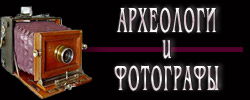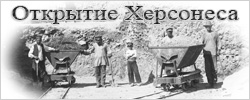|
Dear friends! |
|
Projects
|
 |
 |
 |
 |
|
Contacts
|
Email: info@chersonesos.org |
Tauric
Chersonesos is the name of the city founded by Greek colonists in southwestern
Crimea more than 2500 years ago. Its archaeological ruins are presently
one of the attractions of the city of Sevastopol.
In ancient Greek the word chersonesos means "peninsula." The city was indeed located on
a small peninsula between two bays. "Tauric" Chersonesos further denotes the location of the colony, that is, "in
the lands of the Taurians". This a warring tribe that inhabited the neighboring mountains. The city was destined
to exist for nearly two thousand years, and its history is intertwined
with that of ancient Greece, Rome, and Byzantium.
As in other Greek colonies, life for the Chersonesites
depended entirely on the agricultural territory, or chora
which lay adjacent to the city. At present, the farm plots and estates of
the chora of Chersonesos are the subjects of interdisciplinary study by
scholars of various specializations. The surrounding countryside was populated
by different tribes, some peaceful, others belligerent. During the Middle
Ages, when Chersonesos became the Christian center of the Crimean peninsula,
a great number of monasteries, hermitages, and "cave towns" appeared nearby.
At the end of the 14th century nomadic raids brought an end to the city
and its ruins were buried under earth with time.
In 1827, 50 years after the foundation of Sevastopol, the first excavations at the site of Chersonesos commenced. Soon afterwards, Chersonesos received the epithet of "Russian Troy." With every year new
houses and streets, squares and churches of the ancient city appeared from under layers centuries-old.
The excavations produced so many finds that
they soon comprised an intriguing collection, and thus appeared the Chersonesos
Archaeological Museum. In 2012 the museum
celebrated its 120 anniversary.
You can spend all day here viewing the exhibits or taking a tour of the
archaeological site of the ancient city. Or
you can take a virtual trip using the map
indicating the parts of the city that have already been excavated. The excavations
are located not only within the ancient city but also on numerous sites
outside the walls of Chersonesos. Would you like to take part? Sign up for
a guided tour!
A national preserve was established
to accommodate and organize the large number of scholarly investigations surrounding the numerous
archaeological sites of the ancient city. In 1993 by decree of the President of Ukraine the Preserve
was given the status of a national institution of culture.
Presently, the About Chersonesos is not only a leading tourist
attraction, it is also an important scholarly and methodological center for archaeologists, historians,
and specialists of related fields. The staff of the Preserve consists of an enthusiastic group of scholars
devoted to their work. You can get acquainted with them and ask them questions.
Foreign interest in Chersonesos has recently
increased considerably. Professor Joseph C. Carter, the Director of the
Institute
of Classical Archaeology at the University of Texas at Austin, has been
working in conjunction with the Preserve to establish an archaeological
park and to this end has enlisted the assistance of non-profit and non-governmental
organizations abroad. The Preserve has entered the new millennium with the
task of realizing this ambitious and exciting project.
These events have inspired the creation of this website. We are pleased to invite you to explore it with all the interest and enthusiasm that we ourselves derive from our studies of Chersonesos. Welcome!